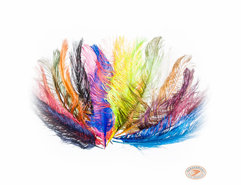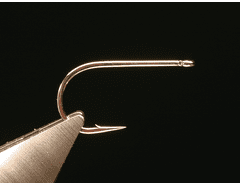Intruder Fly Supplies
The Caddis fly Shop will supply you with superior materials to tie amazing Intruders for steelhead and salmon. From tube Intruders to shank Intruders, we have you covered.
The Chinook Intruder. The steelhead Intruder. The Big-bad Intruder fly. If you tie one Intruder ya gotta tie a dozen! Where can you get your Fly tying materials and supplies for tying the infamous Intruder? Right here at the Caddis Fly.
We are familiar with Intruder style flies & have dozens of Intruder instructional videos on the Caddis Fly YouTube Channel.
From fly tying supplies including Intruder hooks, tubes, body materials, Intruder winging, threads, cements Š we have found that the range of products best suited to tying Intruder flies is big and bad. If you have any questions about the right combination of materials or proper pattern, give us a call!Our Intruder fly product offering is part of our ongoing effort to share the joy and passion about Intruder flies, and the materials, hooks, and tools needed to the best attractors for salmon and steelhead.
When we refer to Salmon and steelhead Intruders we are simply noting that the Intruder is a style of fly much fished for both salmon and steelhead. More Intruders are likely fished for Chinook salmon than for other species like coho, chum, and so on. This is because Chinook have been especially receptive, under the right circumstances, to eat an Intruder. Steelhead everywhere eat some form of the Intruder fly, so that is simple. When we refer to a salmon intruder, we are probably thinking about a Chinook Intruder, so keep Chinook salmon somewhere in the back of your mind when dreaming about Intruder fly patterns and Intruder supplies and materials.
Our crew ties Intruders on XL hook shanks, Tubes and Waddington Shanks. Tying on an Intruder fly on a tube may involve simple plastic tubing or tubing made from aluminum, copper, or depleted uranium armor-piercing bullets. Proper weighting is a crucial aspect of fly construction. Flies that are weighted too heavily will hang up or settle out just where we might be expecting to get the grab. Intruder flies too-lightly weighted may sail over the fishÕs heads and not trigger the reaction we hope for.
Intruders tied on various XL hooks (e.g, TMC 300 #2) will almost always require a dumbbell, bead, or cone to properly weight the fly Š simply because the hook wire is very light in comparison to the fly bulk. The same is true with standard plastic tube-tied Intruders. Big flies tied on weighted tubes reuqire less added weight, or none at all.
We stock standard XL hooks, Waddington Shanks, and various tubes for the serious Intruder fly tyer. Shoot us an email or call if you have questions about the best hook sizes for your specific Intruder fly patterns.
Threads and Wires for tying the king salmon and steelhead Intruder fly. My-oh-my, there are a lot of good threads out there. Our tyers have fun debating the merits of various threads. One of our favorite materials for tying Intruders is the Lagartun X-Strong 150 Denier thread. This thread is more expensive, but it is stronger, lays flatter, withstands the tension of tight spinning, cuts easily with our standard scissors, and lays flat at the head of the fly. Wire selection for tying Intruders is not too mystical. We use wire to counter-wrap our reverse palmered flies. Lagartun Varnished Wire and Ultra Wire are both very good products. Both of these wires are available in many colors.
Body Materials for Intruders tied for salmon and steelhead. Our tyers usually keep bodies of Intruders slim to assist sinking and reduce drag on the fly as it drops into the fish zone. Consequently, we use a lot of slim tinsel bodies.
Dumbbell Eyes (Barbells) for king salmon and steelhead Intruders. Many good of choices here. Perhaps mysteriously, we tend to use dumbbells on tube Intruders, rather than choosing cones designed to fit on the front of tube flies. Why? Because use of a dumbbell, seems to allow more positive design of the up-and down-side of our Intruder fly. By choosing a dumbbell of sufficient weight, we know that that dumbbell will tell the Intruder fly to ride with the dumbbell down in the water. Then, clever little tyers that we are, we decide what fly tying material we want to tie on the dorsal side of our fly. Some salmon and steelhead Intruders are virtually without distinct dorsal and ventral differences in design, but some are designed to very specifically have a top-side and a belly side.
Flashy Materials for Chinook Salmon and Steelhead Intruder fly patterns. This product category offers a zillion possibilities. Shiny this. Holographic that. These flashy products all have their place.
Generally, we avoid saltwater flash supplies and materials in our Intruders because we find them too stiff our bulky to make good additions to our Intruders. Some products are rather limp (standard Flashabou) and these achieve the most fluid wiggle in the current. The limpest materials, however, do not stand out from the fly when it is not under tension, and so we like to blend these with slightly firmer flash materials.











































